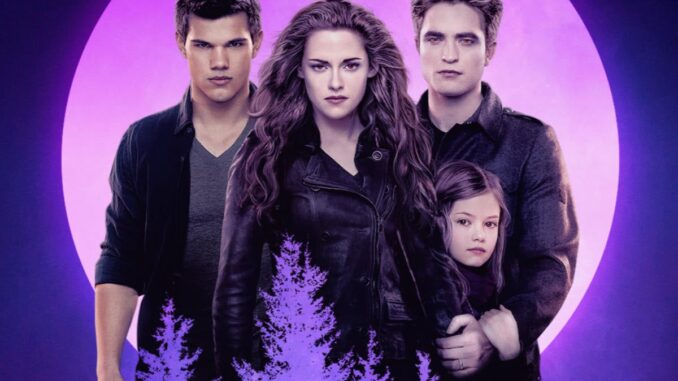
The Moonlight and the Myth: Why The Twilight Saga’s Rebirth Might Just Sparkle Anew
The news landed like a silver bullet through the heart of every millennial, a soft yet undeniable thud in the digital ether: “The Twilight Saga Reborn: Lionsgate Confirms TV Reboot, Stephenie Meyer Returns.” For many, it was an echo from a bygone era, a whisper of a phenomenon that once held an entire generation in its sparkling, vampire-gloved grip. For others, it was an eye-roll heard ‘round the internet. But beneath the layers of nostalgia, skepticism, and outright fervor, lies a compelling question: why now, and what does this “rebirth” truly promise? This isn’t just an exercise in IP mining; it’s an opportunity for an illustrative reimagining, a chance for a story that once burned so brightly to find a new moon to reflect its light.
To understand the weight of this announcement, one must first recall the sheer, unadulterated force that was the original Twilight Saga. It wasn’t merely a series of books and films; it was a cultural lightning rod. It ignited ferocious debates in schoolyards and online forums, pitted Team Edward against Team Jacob with the passion of ancient feuds, and introduced a generation to the intoxicating allure of forbidden love and supernatural longing. Stephenie Meyer crafted a world steeped in gothic romance, where ordinary girls found themselves at the epicenter of extraordinary destinies. Its narratives of longing, belonging, and the fierce protectiveness of love resonated deeply, despite its critics. The films, while often campy and at times uneven, captured the palpable tension and the sweeping, dramatic romance that defined the books, culminating in a saga that grossed billions and left an indelible mark on pop culture. Like a vampire, its influence, though dormant for a time, never truly died; it merely awaited the opportune moment to awaken.
And that moment, it seems, is now. The transition from the cinematic behemoth to the expansive canvas of television is perhaps the most illustrative aspect of this rebirth. Film, by its very nature, demands distillation. Entire character arcs, intricate lore, and subtle emotional nuances were often sacrificed on the altar of a two-hour runtime. The television format, a sprawling tapestry rather than a series of cinematic snapshots, offers a tantalizing promise: the chance to delve deeper into the shadow-drenched forests of Forks, to linger longer in the halls of Forks High, to unfurl the intricate history of the Volturi with a patience films simply could not afford. Imagine the origin stories of individual vampires, the hidden corners of the Quileute reservation, or the psychological toll of immortality explored not as fleeting flashbacks, but as fully developed narrative threads. This isn’t just a reboot; it’s an opportunity to breathe within the world Meyer created, to allow its inherent gothic romanticism and its often-overlooked emotional complexity to fully unfurl.
The true magic in this “reborn” narrative, however, lies in the return of Stephenie Meyer herself. This is not a studio casually plundering intellectual property; this is the architect returning to her blueprint, the high priestess to her sacred flame. Her involvement is a shield against arbitrary reimagining, a guardian ensuring that the essential spirit and lore of her world remain intact. She isn’t merely a consultant; she’s the original storyteller, offering not just her blessing but her guidance, her insights into the characters and world that sprung from her own imagination. This promises an authenticity that many reboots sorely lack, a guarantee that while the aesthetic may evolve and the narratives expand, the beating heart of Twilight – its unique blend of yearning, danger, and obsessive love – will remain true. Her return offers fans the hope that this television series will be less a cover version and more an extended, remastered edition, with deleted scenes and director’s commentary built directly into the viewing experience.
Of course, the specter of skepticism looms. Can the original magic be recaptured? Will a new generation embrace a story that, for all its strengths, also generated its fair share of ridicule? The answer, perhaps, lies in understanding that rebirth is never a mere copy. Like a phoenix rising, it carries the essence of what came before but is fundamentally transformed. This TV reboot has the potential to shed some of the film series’ more polarizing elements while amplifying its undeniable strengths. It can lean into the atmospheric horror, the poignant melodrama, and the rich mythology with a renewed sense of purpose. It’s a chance to tell a familiar story with fresh eyes, to engage with its themes of choice, destiny, and the monstrous nature of love in a more nuanced, sophisticated way, appealing to both the fiercely loyal original fans and a curious new audience.
The announcement of The Twilight Saga Reborn is more than just a headline; it’s an invitation to step back into a world bathed in eternal twilight, to hear the soft whispers of vampires and the ancient pulse of werewolves once more. With the expansive scope of television and the guiding hand of its creator, this reboot promises not just a rerun, but a true evolution. It’s a chance for the moonlight to illuminate corners of the myth previously left in shadow, proving that some stories, much like the eternal beings within them, are simply destined to live on, sparkling brightly in a new dawn.
